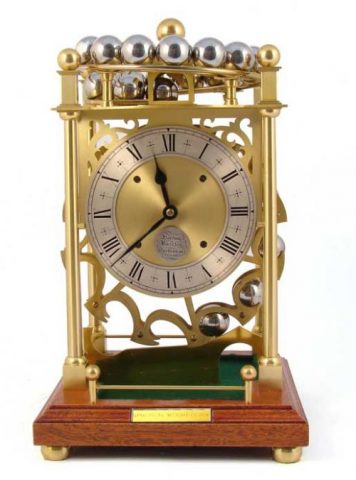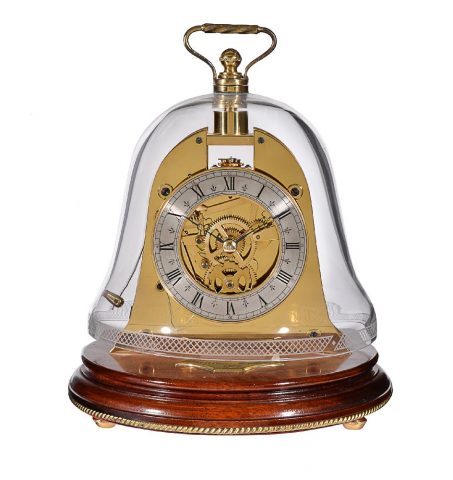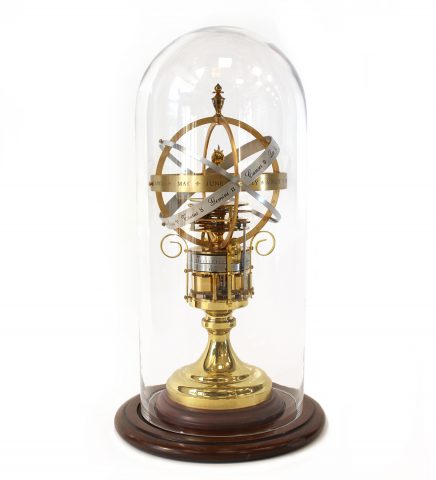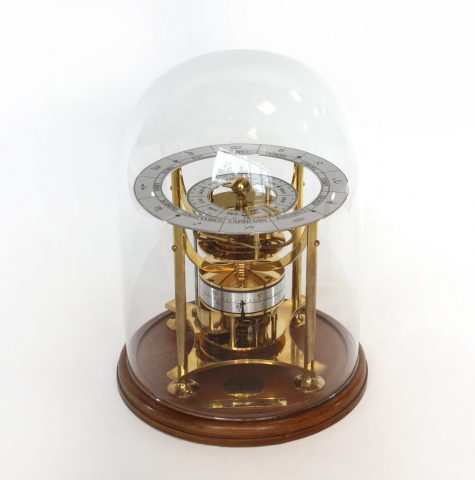This clock was designed to commemorate the elegance and beauty of the Concorde supersonic aeroplane, brought into service in the same era.
Fred Whitlock produced this model for Dent, based on a design by Martin Burgess and scaled to two thirds of its size. Initially, 25 were made. Then in c.2000 Whitlock made a further 10 from the parts he still had in stock.
The clock has a mesmeric action; follow the link to the video.
It utilizes a single pivot “grasshopper” escapement – designed by John Harrison in the 1720s – a system with negligible friction yet providing a near-continuous impulse. Less friction enables greater timekeeping accuracy.
The massive compound pendulum has a leisurely two-second swing (four-second cycle). A pair of weights at the back are suspended on an endless chain pulley system, and these wind the spring remontoire to power the escapement. This spring is wound every 20 seconds. Every 7 minutes, when the large weight reaches its lowest point, it activates a switch which triggers a second remontoire, electrically rewinding the weight back to the top.
The ingenious layout of this design allows for the winding of the escapement rementoire even when the weights are being wound.
The plaque on the base states E. DENT & CO., LONDON, ENGLAND. NO JEWELS / NO. 005 (of 35), and bears Whitlock’s signature.
The skeleton movement is protected by a brass-framed glass cover, which sits on the wooden base. A mains socket is required for the (two-meter long) power lead for the electrical Huygen’s-type rementoire, which can run on 110V or 240V.
- Height: 76cms (30 inches)
- Width: 37cms
- Depth: 28 cms
As with many designs produced by Fred Whitlock and others for Dent in this period, the quality of both the engineering and finish are exceptional.
Edward Martin Burgess (born 1931) is a very highly talented leading English horologist, creating a series of Sculptural Clocks in the 1960s. He is an expert on the works of John Harrison and set out to prove Harrison’s claim that his clock designs were capable of maintaining time to within 1 second over 100 days. In a 100-day test between 6 January and 16 April 2015, a clock largely made by Burgess (and finished by Charles Frodsham under Burgess’s direction) lost 5/8 of a second to claim the title of the most accurate mechanical clock with a pendulum swinging in free air.
Other interesting skeleton clocks from the same era:
Make an enquiry







